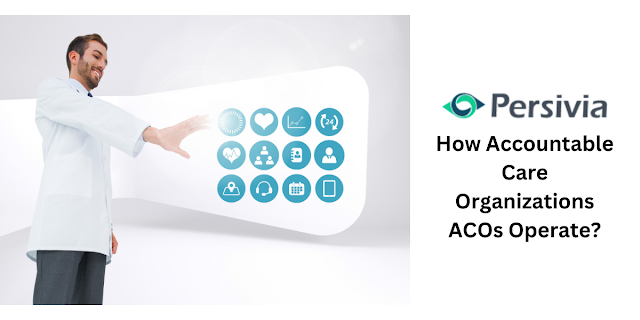How Accountable Care Organizations ACOs Operate?
Accountable Care Organizations ACOs are a healthcare delivery model designed to improve the quality
and efficiency of healthcare services while controlling costs. They bring
together groups of healthcare providers, such as hospitals, physicians, and
other healthcare professionals, to collaboratively manage and coordinate the
care of a defined patient population.
Here's an overview of how these organizations operate:
Formation and Structure
ACOs can be formed by hospitals, physician groups, or a combination of both. They are often established as partnerships or collaborations among different healthcare entities. The Accountable Care Organizations ACOs structure encourages shared responsibility for the health outcomes of a specific patient population.
Accountability for Quality and Cost
A primary goal is to improve the quality of patient care while controlling healthcare costs. These organizations are held accountable for meeting certain quality benchmarks and cost-effectiveness measures. These benchmarks may include patient satisfaction, preventive care, and the management of chronic conditions.
Patient-Centered Care
A key principle of an ACO is to provide patient-centered care, focusing on the individual's needs and preferences. Coordinated and integrated care delivery helps ensure that patients receive the right care at the right time, avoiding unnecessary tests or procedures.
Data Sharing and Information Technology
They heavily rely on
health information technology to facilitate communication and data sharing
among different healthcare providers. Electronic health records (EHRs) play a
crucial role in ensuring that relevant patient information is accessible to all
members of the care team, promoting seamless coordination.
Financial Incentives
These organizations often operate under a shared savings or risk-sharing model. In a shared savings model, if the ACO successfully reduces healthcare costs while maintaining or improving quality, it receives a portion of the savings. Risk-sharing models may involve financial penalties for failing to meet cost and quality targets, encouraging them to actively manage and coordinate care.
Population Health Management
Lastly, ACOs focus on population health management by proactively addressing the health needs of the entire patient population they serve. Preventive measures, wellness programs, and disease management strategies are implemented to keep patients healthier and reduce the need for costly interventions.
Ending Notes
In summary, Accountable Care Organizations ACOs operate by fostering collaboration among healthcare providers, emphasizing quality and cost-effective care, leveraging technology for information exchange, and actively managing the health of a defined patient population. Further, their success is often measured by their ability to achieve better health outcomes and reduce overall healthcare costs.
If you want to integrate the best ACO Reach healthcare model into your organization’s operations, reach out to Persivia.



Comments
Post a Comment
Please do not enter any spam link in the comment box